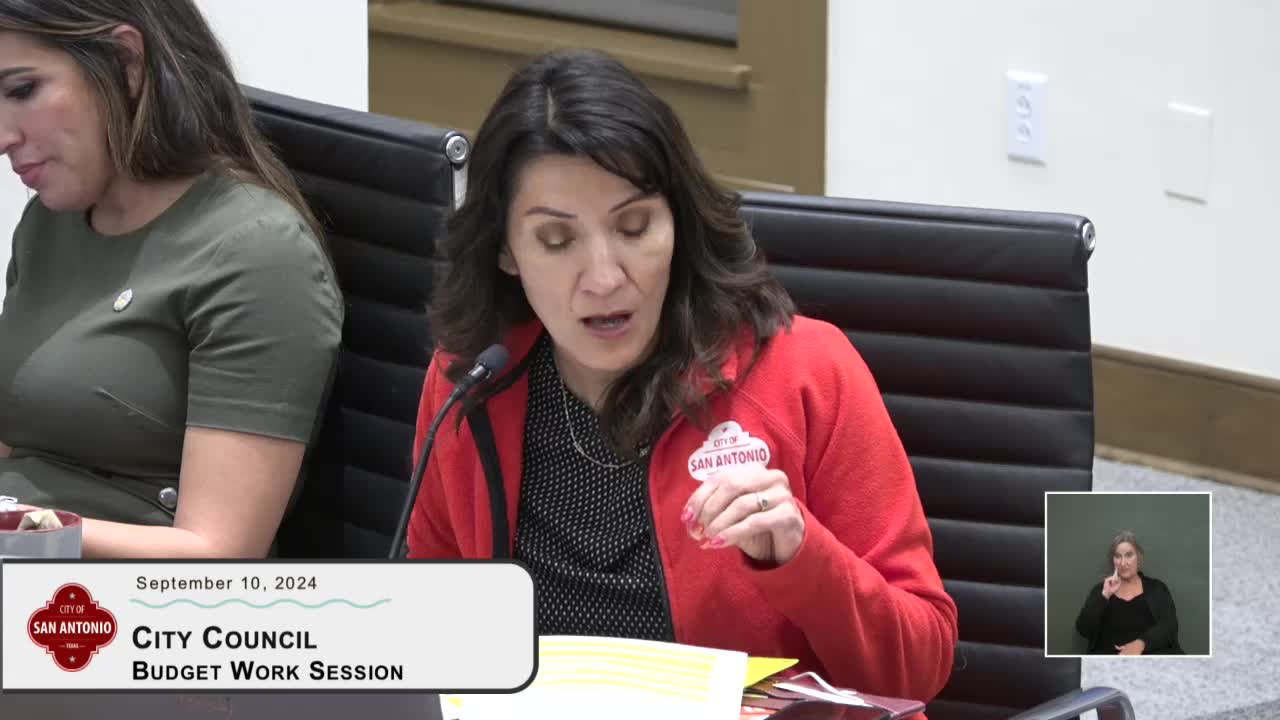City outlines ambitious plan for water security and sustainability
September 10, 2024 | San Antonio, Bexar County, Texas
This article was created by AI summarizing key points discussed. AI makes mistakes, so for full details and context, please refer to the video of the full meeting. Please report any errors so we can fix them. Report an error »

During a recent government meeting, officials discussed critical initiatives related to water security and sustainability efforts in the region. A significant portion of the conversation focused on the aquifer system, which supplies approximately 70% of the area's drinking water. The city collaborates with organizations like Green Spaces Alliance and The Nature Conservancy to engage landowners in the watershed, particularly those in rural areas, to facilitate land acquisition for conservation purposes. This process involves a scientific scoring model to evaluate properties, which are then presented to the Conservation Advisory Board (CAB) for endorsement before being brought to the city council for approval.
In addition to water security, the meeting addressed the city's climate action plan, originally established in 2019 with a goal of achieving carbon neutrality by 2050. Officials highlighted the importance of reducing greenhouse gas emissions and noted that a comprehensive inventory is conducted every two years to track progress. The most recent inventory indicated a 14% reduction since 2014, with a more modest 3.4% reduction between 2019 and 2021. To meet the ambitious target, a yearly reduction of approximately 4.8% is necessary, posing a significant challenge, particularly in the transportation sector.
As the city continues to navigate these critical issues, the integration of water management and climate action remains essential for ensuring a sustainable future for the community.
In addition to water security, the meeting addressed the city's climate action plan, originally established in 2019 with a goal of achieving carbon neutrality by 2050. Officials highlighted the importance of reducing greenhouse gas emissions and noted that a comprehensive inventory is conducted every two years to track progress. The most recent inventory indicated a 14% reduction since 2014, with a more modest 3.4% reduction between 2019 and 2021. To meet the ambitious target, a yearly reduction of approximately 4.8% is necessary, posing a significant challenge, particularly in the transportation sector.
As the city continues to navigate these critical issues, the integration of water management and climate action remains essential for ensuring a sustainable future for the community.
View full meeting
This article is based on a recent meeting—watch the full video and explore the complete transcript for deeper insights into the discussion.
View full meeting
